
Vibing in Santa Fe, New Mexico
“It’s literally magical there,” a friend texted when I told her I was headed to Santa Fe. “Like, actual vibes.” Creative types from painter Georgia O’Keeffe to writer George R. R. Martin agree. They’ve flocked to the capital of New Mexico since it became a flourishing artist colony in the 1920s. The Spanish were enamoured enough with the place that back in 1607 they named it, creating what would become the oldest capital city in the United States. And at least 20,000 years before that, ancestors of today’s Puebloans were the first people to enter the Americas.
That the vibes are good in Santa Fe is a given. Because of this, I expected a New Age-y kind of place, a Byron-before-the-billionaires teeming with fortune tellers, tie-dye and the casual appropriation of indigenous culture. Those are all present, but what surprised me was the vibrancy of Santa Fe beyond the tourist haunts, as well as the beauty of the landscape, both natural and built.
The first glimpse of Santa Fe, situated in the Sangre de Cristo mountain range, is the skyline: low-slung, rock-red rectangular roofs in the Spanish Pueblo style, which in turn builds on adobe mud structures first constructed in about AD750. Then there’s the sunshine, since Santa Fe enjoys 300 days of it a year. Finally, the distinctive smell of pinyon, a native pine, is everywhere.

Venture out of town and explore one of the area’s many national parks.Credit: Getty Images
Nuts from the pinyon are used in New Mexican cuisine, a blend of Native American, Spanish and Anglo tastes. It’s similar to Mexican and Tex-Mex, but made distinctive with the local “New Mexico chile”. Staples include beef and chicken enchiladas and chiles rellenos, deep-fried green chillies stuffed with cheese.
Palacio Cafe, a diner located off the picturesque Spanish-style town square, is famous for its so-called “Christmas burritos”, made with both green and red chillies. At the other end of the spectrum is Arroyo Vino, where vegetarian takes on New Mexican classics are composed with corn and chillies from its farm garden. “You can’t go wrong on restaurants,” another friend advised, and whether or not his rave review depended at least partly on Santa Fe’s free-flowing margaritas, I had to agree.
For a quick excursion into the surrounding wilderness, Santa Fe Mountain Adventures will drive you in a Swiss Army vehicle over dry river beds to the aptly named Diablo Canyon. Bobcats, mountain lions and bears are theoretically around, but you are guaranteed to see the pinkish-purple prickly pear cactus, a quintessential symbol of the American south-west. The most popular of the area’s many national parks, Aztec Ruins National Monument, features the preserved remains of an ancestral Puebloan community.
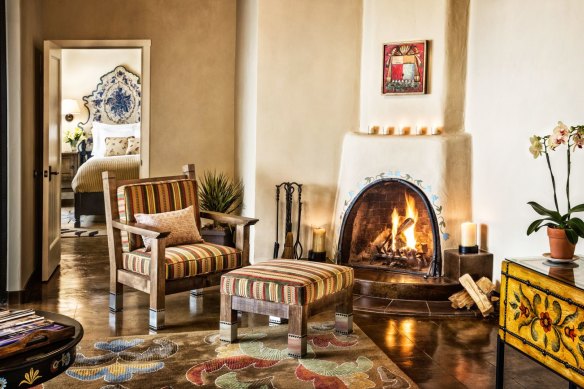
La Fonda on the Plaza, a historic hotel whose famous guests included Simone de Beauvoir.Credit: La Fonda
Back in town, the shopping on the main drag is mostly dreamcatchers and turquoise belt buckles, though for a grand you can acquire a genuinely beautiful pair of bespoke cowboy boots. There are more than 50 galleries in the contemporary art district of Canyon Road and many museums, including those devoted to Georgia O’Keeffe and Native American and Hispanic arts and culture.
For a trippier experience, Meow Wolf’s House of Eternal Return is an “immersive art adventure” in a warehouse. It’s a must for George R. R. Martin fans – the Game of Thrones author is one of its funders – and also toddlers, who will delight in exploring a psychedelic funhouse not dissimilar to the inside of their own heads.
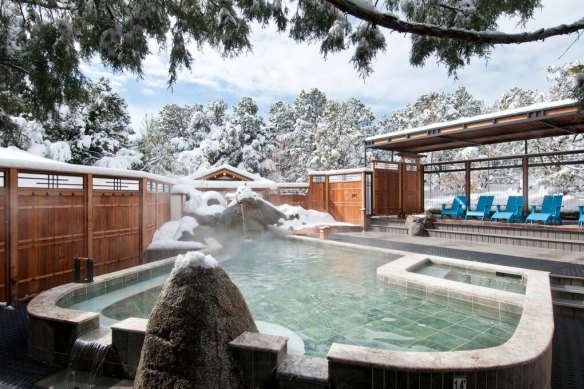
Ten Thousand Waves, a Japanese ryokan with mineral-rich hot springs.Credit: Ten Thousand Waves
Two very different hotels both feel authentically of Santa Fe. On the site of the city’s first inn is La Fonda on the Plaza. The adobe walls are cool to the touch and teeming with history. In the 19th century, the inn was popular with trappers, soldiers, gold seekers and gamblers. Today’s structure, built in 1922, retains its original outdoor patio and stained-glass skylights. It has also accrued enough Native American art of note to host tours of the collection. Simone de Beauvoir called La Fonda the most beautiful hotel she’d seen in America and, sitting under the soaring glass ceiling of the dining room watching guacamole prepared with chillies table-side, you may find yourself adopting the languid air of an expat French feminist.
Ten Thousand Waves is a Japanese ryokan founded in 1981 on the outskirts of what is America’s highest-altitude capital city. Guests of the hotel spa must go higher still, climbing 100 steps through a pine forest to bathe in mineral-rich hot springs. Did I expect to have a shiatsu massage rivalling those in Japan on top of a mountain in New Mexico? No. But Santa Fe was full of surprises. Vibes and surprises. Amelia Lester
Being awed by the northern lights in Churchill, Canada
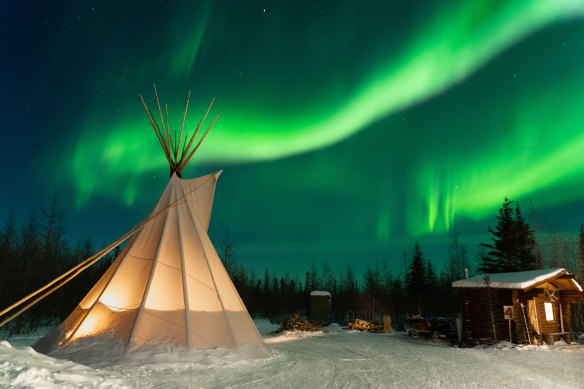
Churchill, Canada is one of the best places in the world to see this natural phenomenon.Credit: Travel Manitoba
WHY: In this place, the northern lights are visible in the night sky for more than 80 per cent of the year.
Loading
THE EXPERIENCE: A streak of light, faint as fog, rises from the horizon. Flecked with rainbows of pink, purple and green, it billows across the sky like a silk curtain. Moving in waves, the light builds in intensity and speed. Soon, the entire sky burns emerald. But try as you like, you’ll never be able to describe fully the aurora borealis, nor the feeling of awe you get from standing directly beneath it. Churchill, in north-east Manitoba, is positioned under the northern auroral belt, and as such is one of the best places in the world to see this natural phenomenon. While aurora activity occurs in Churchill up to 300 days of the year, the deep-winter months produce stronger, more radiant lights. Join a tour with Frontiers North Adventures to see the lights from a variety of locations around Churchill, including a remote wilderness setting, tundra buggy, yurt and dog-sled cabin.
IDEAL FOR: Those who love nature and wilderness – and can handle cold feet.
LIKE THIS? TRY: The aurora australis, or southern lights, can be just as dazzling. Chimu Adventures offers a Southern Lights by Flight experience departing Melbourne and flying across the Southern Ocean towards Antarctica in a private 787 Dreamliner. Kerry van der Jagt
Photographing the national parks of Utah
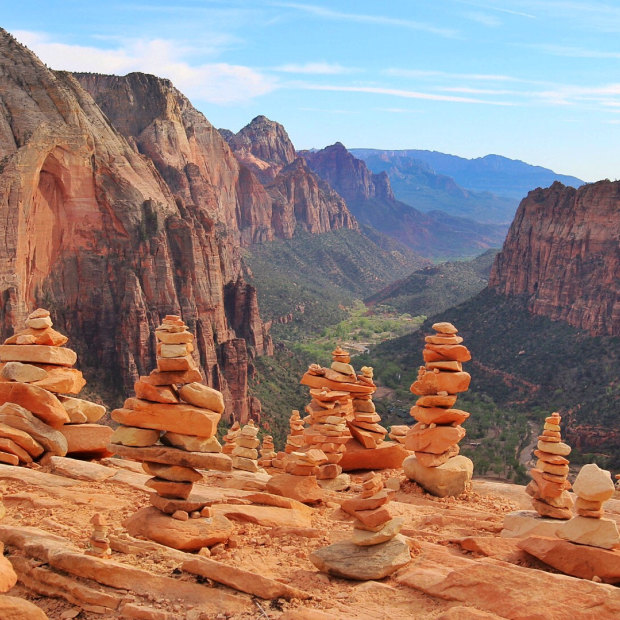
Angels Landing in Zion National Park.Credit: iStock
WHY: The “Mighty Five”, Utah’s quintet of spectacular national parks, offers a variety of magnificent landscapes.
THE EXPERIENCE: In as little as a week, you can do a snap-happy, memory card-sapping drive in Utah, taking in five of the USA’s most photogenic national parks: Zion, Bryce Canyon, Arches, Canyonlands and Capitol Reef. Along well-marked hiking trails, capture shots of Zion’s wave-like slot canyons, Canyonlands’ soaring mesas and Bryce Canyon’s labyrinth of pink-hued buttresses and hoodoos. Of course, spectacular parks can attract spectacular crowds, so also check out some of Utah’s less-visited state parks, forest reserves and national monuments such as Red Canyon, with its maze of rust-tinted spires and turrets, or Goblin Valley State Park, a surreal, otherworldly landscape littered with thousands of mushroom-shaped sandstone pinnacles. To really escape the crowds, hit Scenic Byway 12, a 198-kilometre route that starts near Bryce Canyon and passes through the vast Dixie National Forest and the extravagantly named Grand Staircase-Escalante National Monument. Just remember to bring extra memory cards.
IDEAL FOR: Hikers, photographers and all-round awe-seekers.
LIKE THIS? TRY: Badlands National Park, a similarly spectacular 99,000-hectare wilderness of soaring buttes, canyons and gullies in South Dakota. Rob McFarland
Eating a sandwich at Katz’s Delicatessen, New York City
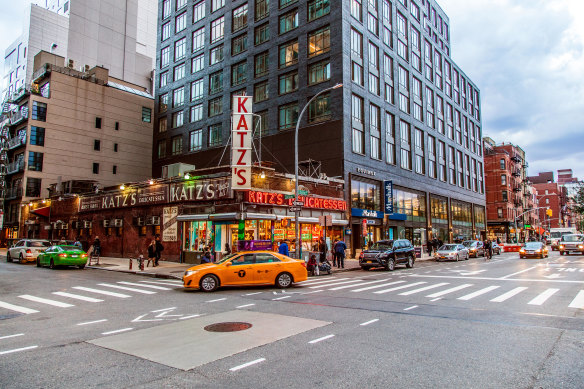
Katz’s Delicatessen, a New York institution since 1888.Credit: Alamy
WHY: Remember that famous scene from When Harry Met Sally? (“I’ll have what she’s having.” ) Meg Ryan had her moment – and a turkey sandwich – at this Lower East Side institution.
THE EXPERIENCE: Founded in 1888, Katz’s Delicatessen, New York City’s most famous restaurant of its kind, does a roaring trade, including serving a reported 6800 kilograms of pastrami a week. Order the signature offering with mustard on rye at one of seven “cutter” lines, where industrious staff slice thick hunks of piping hot, peppery meat, giving you a sample as they go, like a sommelier offering a taste from a freshly opened bottle. Munching that monstrous sandwich, plus a potato latke with sour cream and apple sauce (and a couple of complimentary pickles) washed down with a Dr. Brown’s Cream Soda, and you’ve got yourself a near religious (and historic) food experience. This area was once populated by immigrants, and the menu still speaks nostalgically to that, offering knoblewurst (garlic-laced beef sausage) and tongue, and Jewish specialities like matzo ball soup and knishes – great sources of energy for wandering the nearby neighbourhoods of Alphabet City and Little Italy, Chinatown and the East Village – perhaps in search of your next meal.
IDEAL FOR: Gourmands hungry for pop culture history.
LIKE THIS? TRY: In New Haven, Connecticut, about two hours north-east by train from NYC, stop in at the national institution known as Louis’ Lunch (est. 1895), which the US Library of Congress recognises as the birthplace of the hamburger sandwich. Konrad Marshall
Rafting the world’s second-oldest river, West Virginia
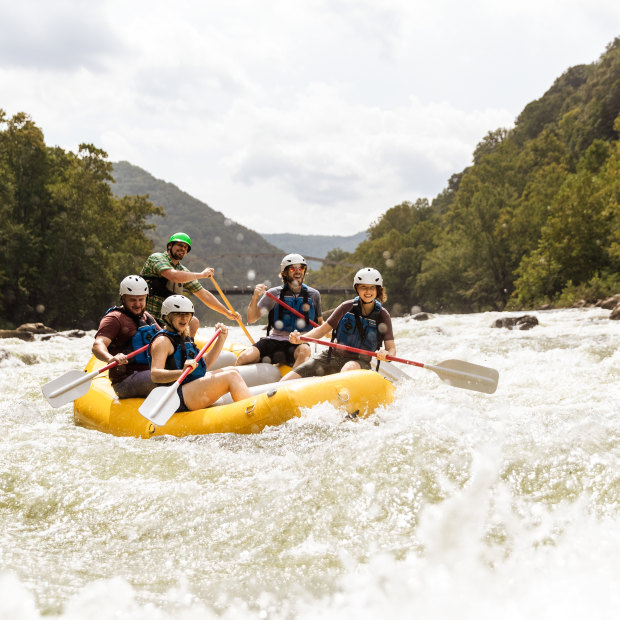
The New River Gorge offers some of the best white-water rafting in the US.Credit: West Virginia Department Of Tourism
WHY: Exhilarating rapids in an awe-inspiring setting.
THE EXPERIENCE: New River Gorge National Park and Preserve in West Virginia, one of the US’s least touristy states, is the country’s newest national park (redesignated in 2020). It sees far fewer travellers than some better-known locations with similar attributes – even though here, some of the best commercial white-water rafting on earth awaits on an 85-kilometre stretch of what’s thought to be the world’s second-oldest river. (Australia’s Finke is considered the oldest.) Choose from two-hour to three-day white-water rafting journeys to suit everyone from complete novices to experts. At the latter end of the scale, ply some of the US’s toughest commercially accessible rapids. Between 500-metre-high canyon walls carved from the Appalachian Mountains and cutting through some of the largest tracts of wilderness in the eastern US, rafts pass more than 50 abandoned mining towns, many only reachable by the river. If rafting’s not enough adventure, the park is also one of the best rock-climbing destinations in the US, with more than 1400 named routes.
IDEAL FOR: Adventure-seekers who favour the road less travelled.
LIKE THIS? TRY: It’ll be more crowded, but take a multiple-day rafting tour down a section of the Colorado River, paddling through Moab National Park in Utah and the Grand Canyon. Craig Tansley
Hanging out on Wall Street, New York City
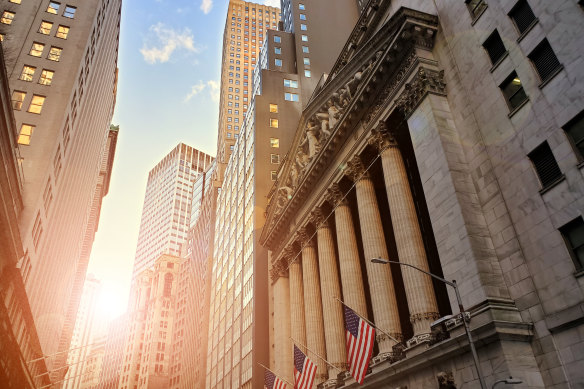
New York’s financial district.Credit: Getty Images
When Australia’s Paspaley family decided to open their first hotel, in New York’s financial district, they knew what they didn’t want it to be. “It’s not the Bulgari hotel,” the company’s executive director James Paspaley says, referring to the jewellery brand turned hospitality empire. Nor would it be pearl-themed. It’s the Wall Street Hotel, Paspaley says, “and the story of my family and our pearling business is one of its many threads”.
Loading
The Paspaleys acquired the beaux-arts Tontine building, one of many architectural gems in this part of town, from the estate of an American commodities trader in the late 1980s. They ran it as commercial offices until the revitalisation of the area made a hotel seem like a sensible business move. Paspaley maintains that hotels and pearling have more in common than you’d think. “Selling people jewellery today is much more than just a cost-benefit value proposition,” he says via Zoom from Darwin. “It’s the glass of champagne, the involvement, the follow-up. Travel fits really neatly into that space.”
Though the south-eastern corner of Manhattan remains lesser known to tourists and locals alike, it is unquestionably historic. Its cobblestoned alleys – and the charmingly restored seaport a stone’s throw from the hotel – summon up the early Dutch settlers who established New Amsterdam as an international trading port.
Today, of course, the main event in the financial district is the New York Stock Exchange. Down the street and with a name synonymous with money, you might expect the Wall Street Hotel, which opened in June of last year, to skew corporate. That’s certainly what James Paspaley thought when it came to designing the hotel. “The vision was a three-star, limited-service thing,” he recalls. The building, 14 floors built at the turn of the 19th century, had other plans. “The windows are where they are, the walls are where they are, and you get to thinking it doesn’t make sense to cut up these comfortable rooms,” Paspaley says.
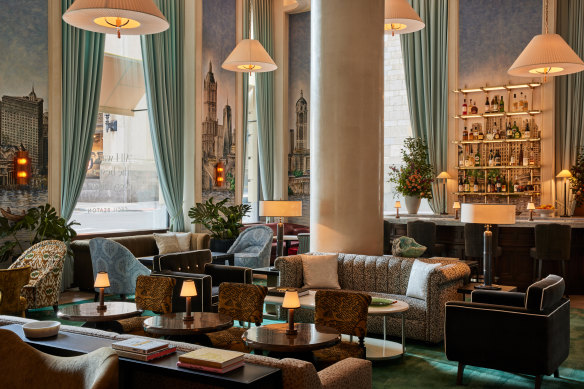
The Wall Street Hotel’s jewel-toned hotel bar.
Building codes are why the hotel’s 180 rooms start at a generous 27 square metres, and why many are considerably larger. But as the dimensions came into focus, so too did Paspaley’s notion of what the hotel should be. In an area dominated by Marriotts and Holiday Inns, the Wall Street Hotel is full of cosy touches: family photos from 100 years of pearling hang in the hallways; mini bars are stocked with all the ingredients for a top-notch negroni; and the hotel’s bar, a jewel box lined in turquoise velvet, always keeps seats for a beleaguered world traveller.
James Paspaley’s favourite detail, though? “I and a number of my family are sheet snobs,” he admits, pointing proudly to the hotel’s Frette linens. “We run a reasonably diverse business from Darwin and, as a consequence, have spent an inordinate amount of time in planes and hotels. The simple pleasure of a luxurious bed when you get to your hotel and you can forgive all sorts of ills.”
Fortunately, there’s nothing that requires forgiveness about the Wall Street Hotel, from the doorman who compliments my packing to the heated mother-of-pearl-studded bathroom floor. And then there’s the water view in the morning, with ferries and yachts and the occasional working tugboat floating by. New York doesn’t think of itself as a harbour city like Sydney does, but my stay at the tip of it gets me thinking it should. Amelia Lester
Discovering the sights and smells of Los Angeles by bike
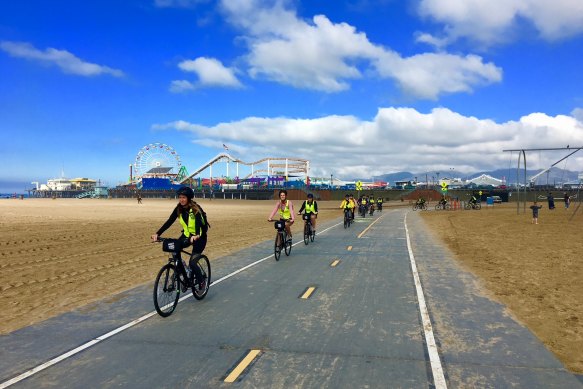
A bike tour of Los Angeles is a good way to beat the city’s notorious traffic. Credit: Bikes & Hikes LA
WHY: There’s a better way to see LA than by car.
THE EXPERIENCE: In a city infamous for its traffic, ride a bike instead. Take a 51.5-kilometre, five-hour, e-biking tour with Bikes and Hikes LA that bypasses the city’s freeways, using bike paths and quieter public roads to pave a way through some of LA’s best-known districts. Using e-bikes means the tour suits every kind of traveller, so leave the lycra at home. Start in West Hollywood and work your way west through LA’s most star-studded suburbs, such as Beverly Hills and Bel-Air. You’ll smell the magnolias and eucalypts outside the homes of stars, and the slow pace of the tour means you can appreciate the nuances of this almost mythical city; from the Mission Revival architecture of beachside Venice to the broad, palm tree-lined boulevards of Santa Monica. Your tour includes journeys through city secrets, such as the LA River, used as a location in movies such as Grease and Terminator 2.
IDEAL FOR: Those who prefer to take their time to understand a destination, especially one as universally famous as The City of Angels.
LIKE THIS? TRY: Jump on an e-bike tour of San Francisco that culminates with a ride across the Golden Gate Bridge into the stunning harbourside village of Sausalito. Craig Tansley
Downing hot chicken and honky-tonk, Nashville, Tennessee
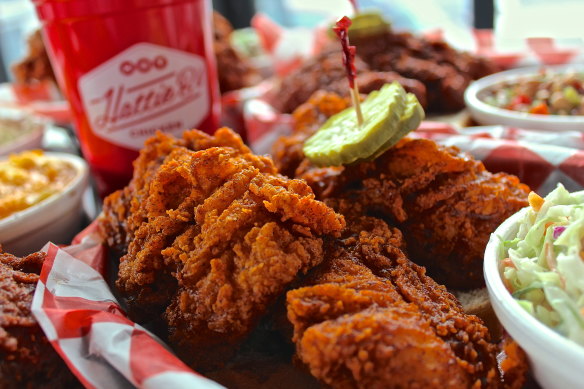
Nashville favourite Hattie B’s serves spicy fried chicken.Credit: Joseph Woodley
WHY: The home of country music is also one of the world’s hottest food cities.
THE EXPERIENCE: Nashville has long been a destination for boot-scooters trying to crack the country charts, but in the past few years, many of America’s most exciting food talents have been lured by the Tennessee capital’s energy, too. Chef Sean Brock’s flagship Audrey restaurant layers traditional Southern cooking with modern panache (caviar on red corn grits, why not?); New York’s cult cocktail bar Attaboy recently opened an outpost; and Rolf and Daughters does the “local, seasonal, natural” wine bar thing with aplomb. Nashville hot chicken in its hometown is essential, of course, and Hattie B’s has multiple locations spicing fried chook with hellish amounts of cayenne pepper. Locals know the “medium” heat is hot enough. Locals also know to avoid the “bro country” traps of main street Broadway, and hit the Station Inn for traditional bluegrass and hot dogs instead. Meanwhile, if you want to hear some real-deal honky-tonk, head to the American Legion Post 82. The old veterans’ bar is a hot date for swing-dancers, pool sharks and toe-tapping cowboys. Two-step beginners welcome.
IDEAL FOR: Music fans who want a taste of old and new America.
LIKE THIS? TRY: Austin. The Texas capital has experienced huge population growth in the past decade, and the city’s food is now as diverse as its underground music scene. Callan Boys
Touring the wineries of Valle de Guadalupe, Mexico
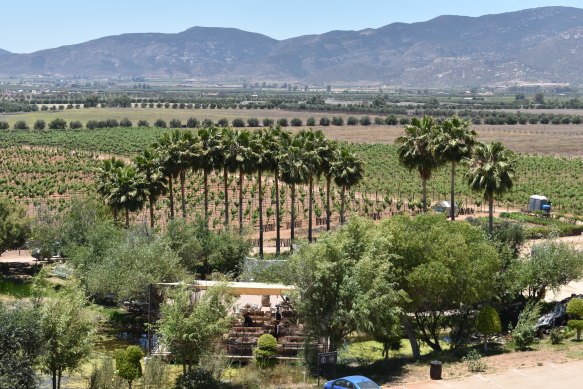
Valle de Guadalupe, where 90 per cent of Mexico’s wine is produced today.Credit: Julie Miller
WHY: Dating back more than 400 years, Mexico’s hitherto unheralded vineyard region is having a moment.
THE EXPERIENCE: Tequila? Si. Cerveza? Si. Wine? Not exactly Mexico’s most renowned beverage. But less than two hours over the border from San Diego, 20 kilometres inland from the pounding surf of Baja California, lies Mexico’s premier wine region, Valle de Guadalupe. This rustic, prickly pear and boulder-strewn valley was first planted with vines by Spanish conquistadors in the early 1500s; today, it produces 90 per cent of Mexico’s wine, with many of its 150 wineries helmed by passionate locals who studied abroad before returning home, adapting their craft to the semi-arid conditions mitigated by cool mists blowing in from the Pacific. Known for experimentation and innovation, the region has also become somewhat of a design hub, with architect-imagined cellar doors, style-driven boutique hotels and paddock-to-plate restaurants attracting celebrities and wealthy urban sophisticates as well as daytrippers on wine-tasting tours.
LIKE THIS? TRY: For a more traditional taste of Mexico, visit La Ruta del Tequila – the Tequila Trail through the World Heritage-listed blue agave fields in the state of Jalisco, home to more than 150 registered tequila distilleries. Julie Miller
In association with Traveller. Thank you to Julietta Jameson, Jane Reddy and Anthony Dennis from team Traveller for their help on this issue.
To read more from Good Weekend magazine, visit our page at The Sydney Morning Herald, The Age and Brisbane Times.









 Add Category
Add Category